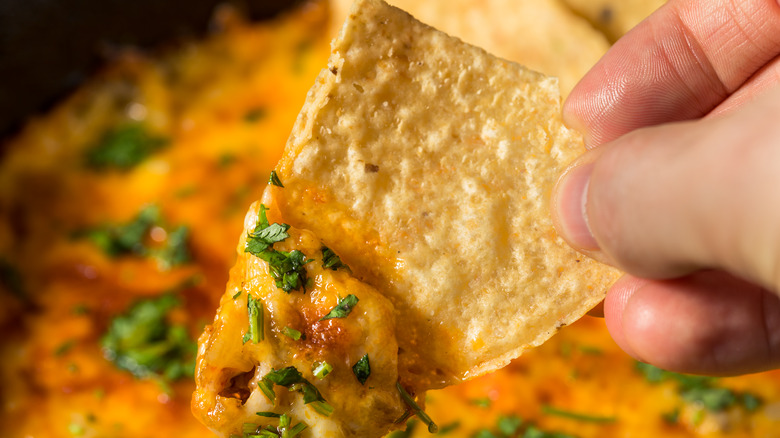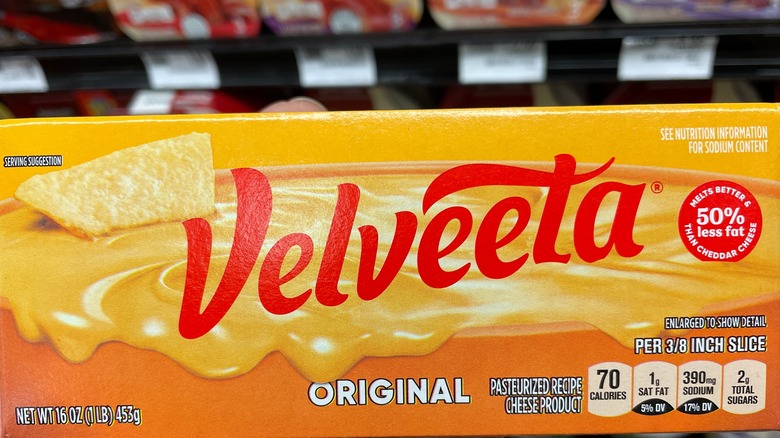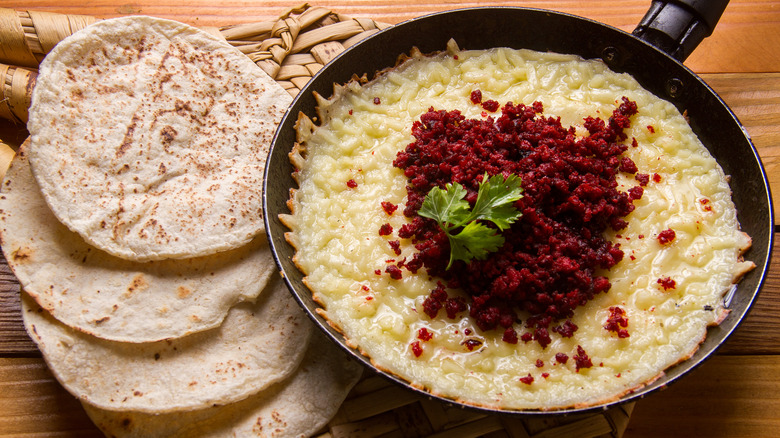What Makes Queso Fundido Different From Classic Queso
We may receive a commission on purchases made from links.
When we think of countries known for their cheeses, we picture rolling hills of French dairies, Italy's fresh mozzarella di bufala, or even the iconic cartoonish slice of Swiss. Though the U.S. and adjacent Alpine countries still dominate global cheese consumption from Europe, one country is often left out of the great cheese debates of our time: Mexico. Our neighbor to the south is home to over 40 different varieties and produced an estimated 448 thousand metric tons of cheese last year; Mexico's contribution to the global cheese game can't go unnoticed (via Dairy Global). Mexico inherited much of its cheese culture through Spanish colonization. Still, in Northern Mexico especially, queso has been a vital part of the development and export of Mexican gastronomy (according to Culture).
People love cheese, especially melted cheese you can dip things in, and Mexico is no exception. In the U.S., just the word queso conjures images of velvety smooth cheese dip with a touch of spice served with chips or draped over nachos, enchiladas, and other favorite Mexican foods. In Mexico, however, Americans won't find the queso dip they've come to expect but rather a traditional molten cheese dip known as queso fundido. Though it may have similarities to queso dip, the two dishes are distinctly different.
Chili con queso
Chile con queso (also known as queso dip or cheese dip) though Spanish in name, is not actually from Mexico; instead, it's an American appetizer that has gained snack food celebrity status. Though its origins can be a little hazy, queso dip is known to be ubiquitous to the roots of Tex-Mex as a culinary genre. Houston Press tells us the most accepted account of queso dip's creation dates back to 1900 with the opening of the first Tex-Mex style eatery called the Original Mexican Restaurant.
By the 1940s, government subsidies promoted the dairy industry, and marketing campaigns were then devised to encourage the consumption of American-made cheeses. At the same time, companies like Kraft and Velveeta developed processing methods that could produce a more stable cheese with a longer shelf life (via Cheese Grotto). In the years to follow, with ample cheese advertising and the rising popularity of Tex-Mex cuisine, queso would become a staple of Tex-Mex restaurants around the country, with processed cheese as the preferred base for a queso dip that was silky and creamy. As regional recipes varied, the heart of chile con queso remains simply a melted block of processed cheese, canned green chiles, and some chili powder or cumin for seasoning (via Eater).
Queso Fundido
For a more authentic Mexican culinary experience, try queso fundido. Originating in the ranchlands of Northern Mexico, queso fundido is a traditional cheese dip made from stringy regionally named Mexican cheeses, like Oaxaca and Chihuahua, blended with a small portion of melting cheese (via Texas Monthly). It is a dish that typically incorporates onion, poblano pepper, and chorizo. Instead of dipping corn chips, it's served with tortillas to better tear away the stretchy molten cheese.
Though it shares ingredients with its culinary cousin, queso fundido is distinctly different from queso dip because of the cheeses it spotlights. According to experts at MasterClass, queso de Oaxaca shares similar stretch qualities to mozzarella, while Chihuahua cheese is more akin to a mild Monterey Jack. Using unprocessed cheese generally gives queso fundido a stringier consistency, but incorporating Mexican Manchego and queso asadero for flavor and texture drastically elevates the dish (via Food Republic). Queso still has its merits, but to compare it to queso fundido would be the same as comparing cocktails made with prepackaged mixers to those made with freshly squeezed juice. However, despite their differences, melty cheese dishes have a home in the hearts of cheeseheads everywhere.


